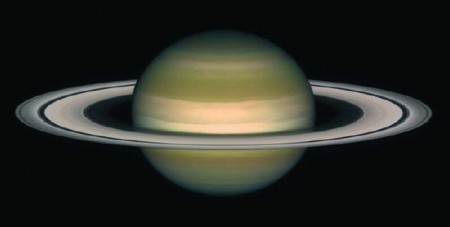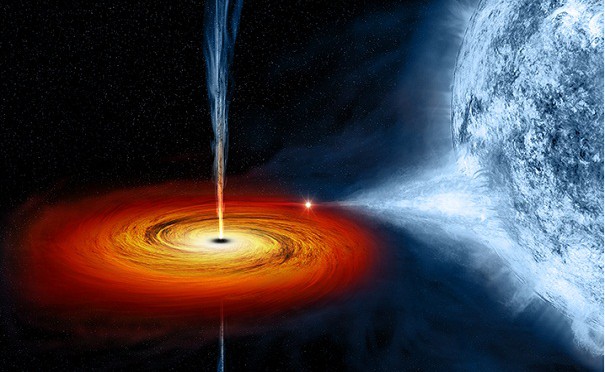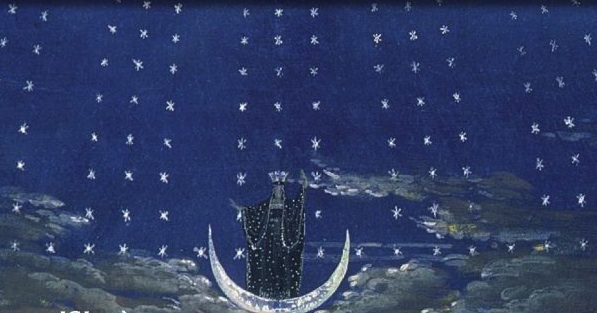The thought experiments which have been described in my previous post Back to the basics are more than an intellectual exercise, because if black holes really exist (and we have strong observational arguments to believe that), then there is a good chance that they will be illuminated by a natural light source. For a black hole or a planet the most obvious form of lighting is a star. This star could, for example, be bound to the black hole in a binary system. Although such systems are common throughout our Galaxy, the corresponding black holes would be impossible to detect by this effect, as their image by reflected light would be drowned in the intense light of the direct image of the star itself.
A much more interesting situation from an observational point of view is when the source of light comes from a series of rings of matter in orbit around the black hole. It is believed that a number of black holes are surrounded by such structures, which are called accretion disks. Saturn’s rings are an excellent example of an accretion disk; they consist of amalgamated pieces of rock and ice which reflect the light of the distant Sun, whereas those of a black hole consist of hot gas brighting by itself (another important difference is that the accretion disk of a black hole is continually being supplied with gas, whereas that surrounding Saturn is the remnant of the primordial Solar System).

The gases fall slowly into the black hole, like water in a whirlpool. As the gas falls towards the black hole it becomes hotter and hotter and begins to emit radiation. This is a good source of light: the accretion rings shine and illuminate the central black hole. One can then ask : what would be the apparent image of the black hole accretion disk ? Continue reading Black Hole Imaging (2) : Heads and Tails





